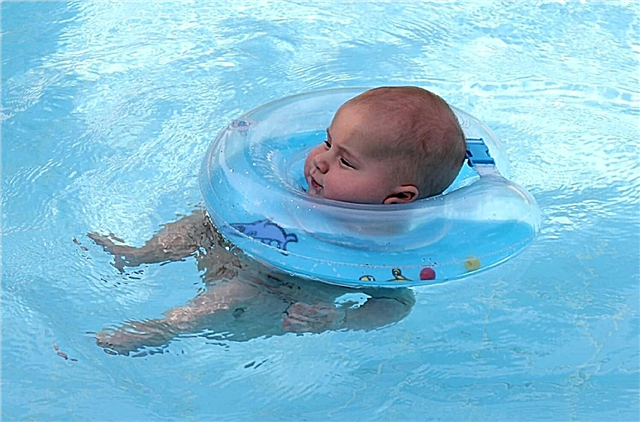The skin of newborns is very delicate and vulnerable. Because of these features, she is susceptible to various diseases. Infants are often diagnosed with vesiculopustulosis, which requires immediate treatment, otherwise the disorder can lead to serious consequences.
Skin structure
The skin is made up of three main layers: the epidermis, dermis, and hypodermis. It acts as a protective shell around the human body.
The topmost layer is the epidermis. It includes several layers of cells called keratinocytes. They begin life at the very bottom of the epidermis, and then gradually move to the uppermost layer. As soon as they come to the surface, they lose their nuclei, fill with keratin and thus form the stratum corneum. It is a semi-permeable shield, which consists of corneocytes connected by lipids and protein complexes. The stratum corneum acts as a barrier, protecting the body from external attacks.
The surface of the epidermis is covered with a mixture of sweat and sebum, referred to as a "hydrolipid film". This oily substance moisturizes the skin and forms an antibacterial and antifungal barrier.
Located under the epidermis, the dermis serves as a supporting structure and gives the skin its elasticity and firmness. This layer contains, among other things, elastin and collagen fibers.
The hypodermis is the deepest layer of the skin. It mainly consists of fat cells - adipocytes, which protect the body from temperature fluctuations and form a "protective mattress" against the pressure to which the skin is subjected.
Specific features of the skin of newborns
A child's skin has the same structure as that of adults, but it does not yet have all of its functions. Fragile and not yet fully developed, it takes three years to strengthen before it can properly fulfill its role as a protective barrier. These features are explained by several factors:
Skin pH is close to neutral at birth. The pH gradually decreases, becoming more acidic. This difference means that baby's skin is more susceptible to infections and irritations.

The hydrolipidic film is thinner in infants than in adults. Therefore, it is less effective in protecting the epidermis from drying out and dehydration. As a result, the baby's skin is much more vulnerable.
The stratum corneum is also more fragile. The corneocytes do not join as well, which means that the layer is more permeable to external factors and infections. The dermis is three times thinner.
In relation to body weight, the surface area of the skin of a child is 3 and 5 times greater than that of an adult. This means that the substance that can be absorbed through the skin becomes much more concentrated in the body, which increases the risk of toxicity.
The new study has led to another major discovery regarding children's skin. A rich cell pool also distinguishes it from the skin of an adult: the skin contains many special cells, which contain their maximum strength at birth, but are extremely vulnerable in the first few years of life - the period during which the skin barrier forms. This wealth of fragile cells is a valuable resource for baby's skin.
The unprotected body of an infant after birth is highly susceptible to pathogens that provoke the onset of purulent-inflammatory skin diseases. Vesiculopustlosis in newborns is one such disorder.
Vesiculopustulosis (vesiculosis) is an infectious skin disorder in newborns. It is characterized by the appearance of a pustular rash on the body and a mild intoxication syndrome.
If treatment is started on time, the disease quickly passes without any complications.
Causes
A child becomes infected through physical contact with an infected person.
The main pathogens:
- staphylococcus aureus;
- streptococcus pyogenes.
Less often:
- klebsiella;
- escherichia coli (Escherichia coli);
- candida (fungi).
Risk factors
There are certain conditions under which the likelihood of attaching an infectious pathogen increases and the occurrence of vesiculopustulosis:
- acute or chronic staphylococcal infection in a pregnant woman;
- in the hospital in the departments for rendering assistance to newborns, an unfavorable epidemiological situation;
- inadequate hand hygiene by healthcare providers caring for and assisting infants;
- reduced defense system in weakened babies (premature birth, birth trauma, the presence of congenital or acquired pathologies);
- illiterate skin care (hypothermia or overheating, the temperature regime is not observed, there are diaper rash, cracks, microtrauma, etc.) on the skin;
- artificial feeding.
Disease types
| A type | Time of occurrence | Causes / source of infection | Notes |
| Congenital | 1 - 3 days of life | Infection occurs through the maternal body in the presence of chronic infections in a pregnant woman or if she is a carrier of harmful microorganisms | The baby becomes infected while in the womb, but can also become infected while passing through the birth canal |
| Acquired | One week after birth | Occurs as a result of violations of hygiene rules in care | The risk group is made up of prematurely born children, since their immunity is underdeveloped, and they are on artificial feeding, as a result of which the necessary antibodies do not enter the baby's body to fight bacterial attack |
Symptoms
The initial signs of vesiculopustulosis, a red-pink pinpoint rash, can easily be mistaken for prickly heat.

If nothing is done at this stage, then the following symptoms:
- blisters no larger than a pea with redness around them. The blisters are filled with a colorless liquid, and they are located in the region of the mouth of the sweat glands;
- a few days later, the liquid in the bubbles becomes cloudy, pustules form;
- blisters rupture for 2 - 4 days, ulcers form, and then crusts.
Rashes are often localized in the armpits, on the back of the head, in the hair, inguinal and gluteal folds. Blisters tend to coalesce and spread quickly.
The child's overall well-being does not change. Temperature rise of 37 - 37.5 ° C is rare.
Babies with a weakened defense system are characterized by a complicated form of the disorder.
In this situation, manifestations the following:
- fever up to 39 ° C;
- due to the pronounced intoxication of the body, the area around the mouth dries up;
- the child's anxiety increases, it is difficult to calm down;
- no appetite.
The number of blisters is determined by the degree of neglect of the disorder.
Diagnostics
A pediatrician diagnoses vesiculopustulosis. In this case, there is no need to carry out laboratory tests and hardware examination.
- The specialist carries out a physical examination.
- Interviews parents in order to find out the time of the onset of pathology and symptoms.
If the disease is severe, will be appointed:
- a general blood test (with vesiculosis, a large number of leukocytes are found);
- bacterial sowing of the liquid formed in the bubbles (the analysis will identify the causative agent of the disease and choose the right treatment).
The occurrence of various kinds of complications, requires consultation other narrowly focused specialists:
- a surgeon;
- infectious disease specialist;
- allergist;
- otolaryngologist.
In general, the diagnosis of the disease is not difficult. The defining moment is the timely identification of the disorder so that the infection does not lead to the development of dangerous complications.

Complications
Complications develop if you do not consult a specialist on time and do not start treatment, as well as when the child is weakened.
| Complication type | Description | Treatment |
| Phlegmon | Purulent-inflammatory lesion of adipose tissue that does not have a clear border. The process tends to spread to surrounding tissues. Irreversible consequences may occur | Treatment is performed by a surgeon. The disorder is difficult to treat. It consists in the use of antibiotics and the opening of purulent accumulations |
| Abscess | Pus accumulates in various tissues, has clear boundaries | Antibiotic treatment |
| Pseudofurunculosis | Severe inflammation in the sweat glands | Antibiotics and quality skin care |
| Sepsis | Infection of the blood due to the penetration of toxins and bacteria into it, as a result the whole body becomes infected | Treatment is carried out in the intensive care unit with the use of potent antibiotics |
| Ostiomyelitis | Purulent bone infection | Surgery, anti-inflammatory therapy |
| Pneumonia | Pneumonia | Antibiotic therapy in combination with the use of antitussives |
| Omphalitis | Inflammatory processes in the navel | Daily flushing with alcohol-based solutions and improving hygiene |
Treatment
With a mild course of the disease, treatment can be carried out at home. When signs of complications are found (eg, fever), it is recommended that treatment be carried out in an inpatient setting.
In any case, it is necessary to exclude the child's contact with people around him.
Treatment recommendations the following:
- baths with decoctions of herbs, for example, chamomile, string, celandine, give a positive effect. These herbs have anti-inflammatory properties. However, it is recommended to bathe the child less often so that the disease does not spread to healthy skin areas. After bathing, smear it with a hypoallergenic baby cream for children;
- twice a day, treat damaged areas with brilliant green or a weak solution of potassium permanganate. This will prevent the spread of infection;
- large blisters are pierced with a needle previously treated with alcohol, pus is squeezed out, the wound is burned with an alcohol solution, then an antibacterial ointment is applied;
- recommended antiseptic ointments for the treatment of damaged skin: Lincomycin and Heliomycin;
- on the recommendation and under the supervision of a specialist, ultraviolet irradiation can be performed. Ultraviolet rays have a disinfecting effect;
- Baby's clothes and diapers must be kept clean and washed with mild hypoallergenic detergents. The linen is ironed on both sides so that other infections do not join.
In case of a severe course of the disease, the baby is hospitalized, and a special therapy is prescribed using antibiotics. Tests are performed to identify the causative agent of the disease.
Cephalosporin antibiotics are usually prescribed. If necessary, immunomodulators are used. The dose is selected individually according to the age of the infant.
If the disease is started, and complications develop, then another treatment is selected, which is aimed at combating them.
Prevention
Taking into account the fact that in newborns vesiculopustulosis appears due to the transmission of a pathogen from the mother, poor hygiene during care, various manipulations involving contact with infant skin, preventive measures must be directed not to prevent the infection of children's skin with pathogens.

The main preventive measures:
- in a woman of childbearing age, foci of chronic infections (dental caries, tonsillitis, otitis media, sinusitis, pyelonephritis, cystitis, etc.) are detected, their sanitation is carried out before pregnancy;
- during pregnancy, foci of infection should also be identified and treated, and relapse prevention is carried out;
- provide the child with proper care after birth with good hygiene;
- regular visits to the pediatrician;
- exclusion of any contact with infected people.
Conclusion
Vesiculopustulosis in newborns develops due to skin infection with a pathogen, if there are factors predisposing for this. As a rule, the disease proceeds easily, and the child quickly recovers, provided that the treatment of the damaged skin is fully performed and the regime measures are observed.
However, children who have suffered from this disease are at risk for the development of diseases of a purulent-inflammatory nature. Therefore, they require close supervision of a pediatrician.



